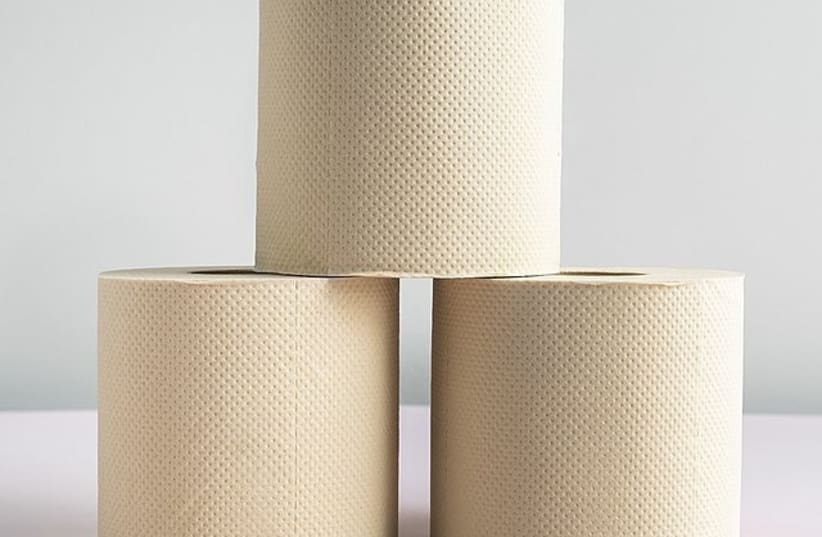Some medical problems can make people feel embarrassed that stop people from getting the help they need. Top of that list is urinary incontinence, according to Dr. Yariv Stebholtz, an expert in functional urology and pelvic floor reconstruction at Ichilov Hospital in Tel Aviv.
Stebholtz was a guest on the "Specialist Clinic" podcast where he discussed the causes and treatments for incontinence.
Why is urinary incontinence so embarrassing?
He explained that urinary incontinence often causes great embarrassment and shame in many patients, who may prefer to pay the heavy price of not talking about it rather than going for treatment.
He said that he encourages speaking to a family doctor and urologist in any situation of urinary incontinence. Though it is not a matter of life and death but it can affect the quality of life.
Different types of treatment for urinary incontinence

There are different types of treatment for urinary incontinence, ranging from easy to difficult, but many people don't know about the other treatments that aren't pills and surgery. These include:
- Physiotherapy
- Bladder training
- Changing (non-alcoholic) drinking routines
Stebholtz recommended seeing a specialist for any treatment plans since small changes can completely change one’s lifestyle.
"In every field, there are diseases that people [must] learn to live with," said Stebholtz.
"When it comes to life and death [diseases], like anything oncological or heart diseases, people quickly run [to] treatment, but in [diseases that affect] the quality of life, it [often] depends on the person.
Stebholtz said he wouldn't "push any patient to take pills or undergo unnecessary surgery, but I will ask [them] what is wrong, and I will try to show how things can be different. Some people are afraid of surgery, don’t want to take medication, and prefer to stay with a diaper and this has personal, psychological and economic costs."
Why does this happen?
Urinary incontinence is a condition that originates when there is a loss of urine control. As a result, it becomes divided into several types, including urge urinary incontinence which is due to urgency. This can lead to loss of control in exertion like when people laugh, cough, run or lift grandchildren.
Stress urinary incontinence
This leads to a rise in the intra-abdominal pressure, putting pressure on the bladder, and, if there is not enough strength in the pelvic muscles, urine can escape. This is one of the reasons that it is very important to strengthen the pelvic floor before and after giving birth and before and after certain surgeries.
'Irritable urine' syndrome
"A more common syndrome than you would think," according to Stebholtz, 'irritable urine' syndrome is when the bladder is more sensitive and contracts at stronger intensities and in smaller volumes. "This means that instead of people going to the bathroom 6-8 times a day, they will get to the point where they go 15-20 times a day.”
He added that the three most common complaints of the syndrome are frequency, urgency and nocturia, a situation where people wake up all night to urinate.
Treatments
As was mentioned, ⅓ of the population suffers from incontinence. You’re not alone, so don’t be embarrassed and ask a doctor to explain the treatments which are available.
Stress urinary incontinence treatment
The first treatment options for stress urinary incontinence are not pills or surgery. You can try:
- Exercises
- Physiotherapy
- Changing living habits
If this isn’t enough, and your quality of life is severely affected, look into the option of surgery. The most common procedures today are inserting a film that supports the bladder and the urethra and helps strengthen and support weaker pelvic muscles.
Postoperative pain is minor, the incontinence becomes insignificant, and success rates are very high. Another solution for women is the injection of a substance that narrows the width of the urethra, thus increasing the pressure that the urethra is able to create to prevent leaks.
For men, the most common phenomenon of stress incontinence is after prostatectomy due to cancer. "We see a significant percentage of people who leak urine after surgery," said Stebholtz, "and quite a few of those male patients are the most embarrassed when it comes to urinary incontinence. They come to the clinic with their partners who encourage them."
In this case, too, there is the possibility of a supporting film, and in slightly more complex cases there are also artificial brackets.
"It is a device that wraps around the urethra and has a small pump inside the scrotum and the patient can control for himself when to urinate and when not to. Most of the day this pump is closed," Stebholtz explained.
"No one knows, only the man and his partner know it’s there." He added that "it has existed for quite a few years in the world and in Israel, but people haven’t heard about it or don’t talk about it enough. It sounds like fiction but it’s a solution that people are satisfied with in 96% of cases and would recommend it to others.”
In conclusion, Stebholtz said he thinks “people are increasingly concerned, and rightly so, with their quality of life and lifestyle. There is also more access to information, and there is target marketing that brings information that people didn’t think to ask about, and they suddenly realize that there are various solutions.”
